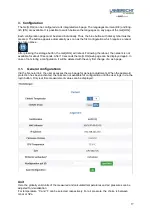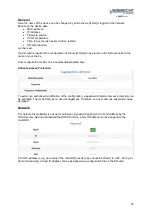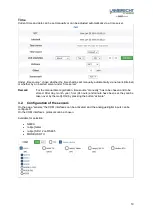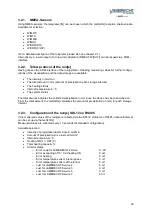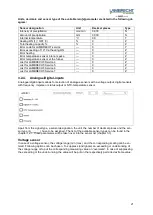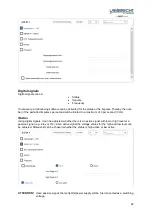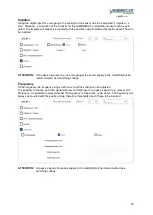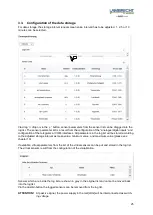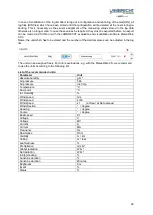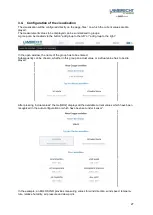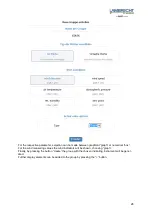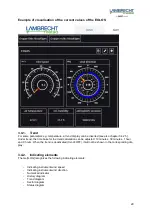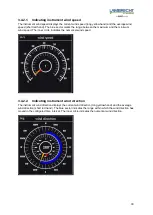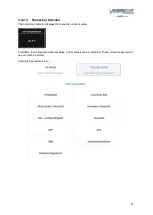
16
With these commands this is set:
“ipAddr”:
192.168.1.2
Subnet
“maskAddr”:
255.255.255.0
Gateway
“gwAddr”:
192.168.1.1
DNS
“DNS”:
192.168.1.1
This way, any other firm IP address can be awarded.
! By manual assignment of IP addresses on a network please pay attention that per one
network point only one device with this IP address is allowed.
Pay attention to the creation of the file as the file with the
correct file ending is saved: „All files (*.*)“ store (file type with).
If the known file ends are faded out under Windows, it may happen that Windows automatically adds
an invisible file ending in the file name. In this case the configuration file is not read!
If there is a password set, it should be added to the SD card before accepting the configuration.
Please use the following command:
{"method":"POST","path":"/system/access","data":{"PWD":"abc"}}
Note: "abc" has to be substituted with the respective password, e. g. , "1234". .
{"method":"POST","path":"/system/access","data":{"PWD":"abc"}}
Whereat "abc" has to be replaced by the respective password; e.g.. "1234".
2. Firmware updates
Firmware updates take place in a simple way via SD card. The actual firmware with the file name
“”$update bin” has to be stored on the memory card and to be put into the met[LOG].
After the met[LOG] has been disconnected from the power supply and turned on again it loads the
new firmware.
Following the update, the file “$update bin” won’t be deleted automatically but can remain on the SD-
card.
















